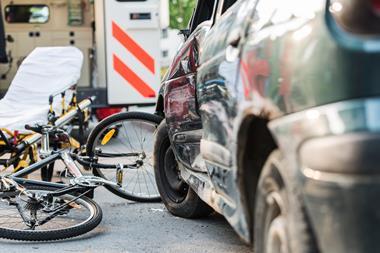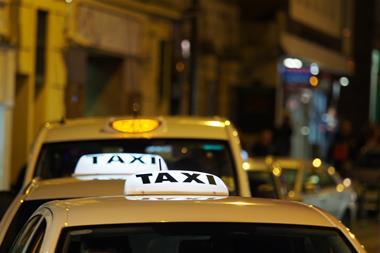The success of remote medical examinations has divided industry professionals, while court backlogs are causing law firms to think outside the box in order to progress claims. Insurance Times takes a closer look at the lay of the land for personal injury claims and what the sector’s future could look like
The Covid-19 pandemic has affected nearly every line of insurance since its full fruition in March, most notably within commercial policies, regarding business interruption (BI) extensions and travel insurance. One area, however, that has perhaps flown under the radar is personal injury claims and litigation, mainly in connection to motor incidents.
One facet of personal injury claims that has been a talking point for insurance professionals has been around remote video medical examinations and rehabilitation services, delivered over mediums such as Skype or Zoom.
In April, the ABI and the Association of Consumer Support Organisations (ACSO) published a Statement of Intent, outlining initiatives that work to progress claims during the Covid-19 pandemic; these steps will run until at least 17 August.
The Statement of Intent said that remote video medical examinations are “encouraged” for non-MedCo cases. For remote examinations delivered through MedCo, which is the system used to facilitate the sourcing of the first fixed cost medical report in soft tissue injury claims, “any challenge on the probity or £180 [plus] VAT fixed cost of the MedCo report will not be the basis of the method of examination itself being by remote video, as long as the latest MedCo guidance has been followed”.
Speaking on this, Lionel Stride, barrister at Temple Garden Chambers, said: “Remote technology has proved to be a vital resource in keeping the litigation ball rolling during lockdown.”
Shirley Woolham, chief executive at Minster Law, agreed that remote medical examinations have thus far been a success. “In order to keep claims moving, there has been a willingness to adopt technology and remote medicals have been progressing. We’ve not seen any push back from insurers accepting remote medicals, which has been super encouraging.”
Minster Law’s own research shows policyholders’s support too; 82% of survey respondents who had attended a remote appointment for the first time were satisfied or very satisfied with their consultation. Around 79% were satisfied or very satisfied with the advice they were given during the appointment and 89% said the consultation was easy or very easy.
With this positive feedback, Woolham would like to see remote medical examinations become a more permanent fixture within personal injury claims moving forwards, especially as this type of digital service resonates with how consumers have been interacting during the pandemic.
“We’ve lived our lives over technology for months, so I think the sector’s going to have to work hard to justify why we don’t take those steps from a technology perspective,” she said.
Barriers
However, Woolham identified two potential barriers as to why remote video examinations may face friction if continued past the pandemic.
Firstly, remote examinations could pose more opportunities for fraud than face-to-face appointments. Susan Brown, director of the Motor Accident Solicitors Society (MASS), which is on the MedCo board, emphasised: “There obviously is scope for fraud around it.”
Brown further added that prognosis periods could be longer due to remote examinations because “experts [are] being over cautious when they’re doing remote exams”.
Woolham conceded that third-party insurers and defendants often view the medical examination as a “fraud prevention point”.
She continued: “The defendant sector would have to get themselves comfortable. We’re all interested to spot whether or not there is any increase in fraud as a result of having a remote versus physical presence. We’re sensitive to that and appreciate that that is a risk, but we’ve not seen that.
“For us to not roll back, there would have to be an appetite in the medical agencies and MedCo to adapt new technology and an appetite from third-party insurers to use them on an ongoing basis and accept that there is a limited risk of fraud because what we certainly know is that customers want it.”
Secondly, Woolham thinks remote consultations could be scaled back for financial reasons.
She explained: “If remote medicals and remote rehab have reduced the income that some of the medical agencies could earn, [there could be] a desire to hold on to old-fashioned business models so that income flows can stay at the levels they were pre-reforms.
Brown, on the other hand, feels that medical professionals who have been able to increase their workload volume by doing remote examinations will want to continue this, while Stride added that “remote examinations by psychiatric experts are likely to remain commonplace”.
Stride continued that litigation costs could be bumped up if physical examinations are still deemed necessary after an initial remote consultation. Plus, an in-person appointment may also be preferred “where a claimant’s credibility is at issue, or where the nature of the claimant’s injury does not readily lend itself to remote examination. The medical expert will otherwise have limited ways objectively to assess the claimant’s condition,” he said.
The MedCo perspective, however, grounds a halt to Woolham’s ambitions of remote video examinations being permanently implemented. Brown told Insurance Times’s Fraud Charter attendees in July: “At Medco, we want to stop it when we can. The [Ministry of Justice] policy is that they don’t like that.”
Court backlog
The lack of court availability due to the lockdown regime and maintaining social distancing has also influenced personal injury claims progression, said Woolham.
“There’s been a near shut down of courts and those courts that have been sitting have prioritised the things that they are going to look at and personal injury claims have not been high on the list,” she added.
Being unable to progress personal injury claims in court has created a mammoth backlog, however Woolham said this has also led to greater collaboration within the sector and a willingness to explore other solutions, such settlements outside of court.
She said: “In part, what that’s done is force the claimant and the defendant sector to find ways of working together where we can still progress the case despite the fact that litigation has been harder to achieve through the court system.
“It’s things like alternative dispute resolution - how do we sit together with claims that are stuck and work out how to get them unstuck without them needing to progress through the process? We’ve seen an increase in appetite on both sides to do that.”
Stride added that remote hearings and alternative dispute resolution (ADR) could continue due to their success during the pandemic.
“In general, lawyers have been in the vanguard of adopting remote working practices and have been well able to conduct hearings, mediations and joint settlement meetings using Zoom, Microsoft Teams and similar platforms. This trend for remote hearings and ADR may well continue because it has proved to be an efficient and effective method of resolving claims,” he said.
‘Cliff edge’ in claims
Shirley Woolham, chief executive at Minster Law, said that motor claim volumes and associated personal injury claims dramatically dropped off as a result of the Covid-19 pandemic, with lockdown measures keeping drivers indoors and vehicles parked. “There was no gentle reduction in volume, it was a cliff edge,” she observed.
Lionel Stride, barrister at Temple Garden Chambers, added that this reduction is “only half of the story” however.
He continued: “Early analysis suggests that driving during the lockdown was at higher speeds and resulted in more serious collisions, and therefore higher value claims; the Metropolitan Police reported an eight-fold increase in speeding fines and that the major factor in a number of fatal accidents during lockdown was speed.”
Changes to motor-related personal injury claims
As lockdown restrictions continue to ease, Stride added that this creates “new hazards” in terms of personal injury claims.
“As the lockdown relaxes, new hazards will arise alongside a change in social behaviour. Many people will be returning to driving after many weeks [or] months ‘out of practice’, there has been more pedestrians walking on the road as they practice social distancing and there will also be a significant increase in cyclists on the roads for the foreseeable future,” he explained.
Woolham agreed, noting that although claims volumes have been reduced over the past four months, the last six weeks have seen a steady uptick, correlating to the relaxed lockdown. She added that claims for cars versus bikes have differed though.
“Car is probably now tracking, for our business partners that we look after, around 70% of what we’d expect to see at this time. Bikes probably a little [closer] to what we’d expect to see, around 80%,” she explained.
Hosted by comedian and actor Tom Allen, 34 Gold, 23 Silver and 22 Bronze awards were handed out across an amazing 34 categories recognising brilliance and innovation right across the breadth of UK general insurance.




















































No comments yet